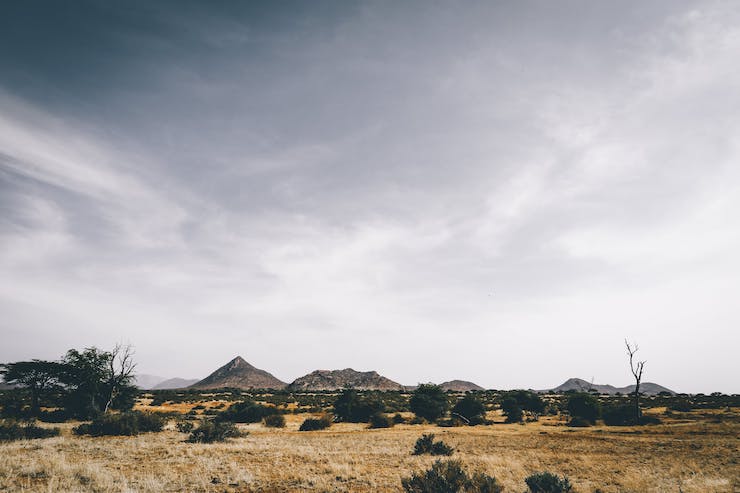Drones Delivering Life Saving Medications to Remote Villages in Ghana

For most people, we take for granted how easy it is for us to have access to things we need on a daily basis. Necessities like food, clothing, and medicine can be found within miles of our homes, or online with the push of a button. Even non-essentials like entertainment is readily available. More than 85% of the world population lives in or around urban areas. However, for those living in remote or underdeveloped regions, access to these daily needs, especially medications, is just as critical. Professor Derek T O’Keeffe of the National University of Ireland (NUI Galway) just released a study on how drones can be used to provide life supporting medications to individuals in need that are part of the 10% of the world’s population living in remote regions.
Professor O’Keeffe is part of NUI’s Department of Medicine and a endocrinologist consultant. He has been extensively published for his work on diabetes and his latest findings were not so much based on the disease, but how to use technology to treat people. When Hurricane Ophelia struck in 2017, many of Professor O’Keeffe’s patients could not get to his clinic for treatment. Then when his patients once again became stranded shortly after from Storm Emma, he knew there had to be a better way to get these patients the medications they depend on. With the rapid climate changes facing the globe, Professor O’Keeffe was determined to find a solution before a problem like this could arise again.
Taking direction from how medical supplies, blood samples, and transfusions had been delivered to remote areas like Ghana, Professor O’Keeffe started looking into drones. In 2019 Zipline became the largest drone delivery operation. They deliver vaccines, medications, and blood products to 2,500 medical clinics throughout Ghana. These clinics provide medical care to close to 22 million people who do not live near enough to a hospital for medical attention. Zipline CEO Keller Rinaudo said, “We really want to show that the right technology company with the right mission can help every person on the planet.” The Zipline drones are loaded with a package and launched from one of several distribution centers. It is then guided to a drop off point where the package is gently lowered to the ground by a parachute. The drone never needs to land or come in contact with anyone on the ground.
For Professor O’Keeffe this was brilliant idea, as long as it could be tweaked to meet the geographical needs of the patients he serves. Spyridoula Maraka, of the University of Arkansas for Medical Sciences was Professor O’Keeffe’s co writer on this project. Even though medical supplies are an ideal delivery product for drones, she said there were a lot of obstacles to overcome first. “For example,” Maraka explained, “we had to make sure that we comply with the Medication Dispensing Legislation; for this we partnered with AllCare Pharmacy in Ireland (equivalent of Walgreens or CVS in the United States) that ensured that the medications that the drone transferred were actually dispensed by a pharmacist. Another example is that we had to ensure real time connectivity of the Drone with the land. Thus, we worked with Vodafone Ireland who modified their antennas so we can ensure uninterrupted 4G signal up to 130 m on the air.” Another issue was to insure that the insulin being transported could survive the journey. “Insulin can be outside the fridge for hours, but it can’t be exposed to extreme heat, so we put it in an insulated parcel with temperature monitoring en route,” Maraka said.
The next step was to work out the logistics it would take to fly the drone from Connemara Airport, Galway to Inishmore, the largest of the three Aran Islands off the coast of Galway. This flight course would require the drone to be flown BVLOS (Beyond Visual Line Of Sight), what has been widely considered the number one obstacle in a full scaled drone delivery operation. To meet regulations that would allow the BVLOS flight, continuous wireless connection, the team had the support of Vodafone Ireland. Before the drone took to the air, the surrounding communities were also notified of it’s course. Not only did this become the first ever BVLOS to deliver medical supplies, it also collected samples to bring back to O’Keeffe and Maraka. “A patient with type 1 diabetes could develop life-threatening diabetic ketoacidosis after more than one day without insulin,” Maraka said. “A blood specimen would allow us to properly diagnose and treat the condition.” So before the drone left, the pharmacist administering the insulin was able to place a blood sample back in the drone’s parcel carrier to be tested.
Both O’Keeffee and Maraka stress that this type of a drone program is there to help when an emergency arises, like a natural disaster or state required lock down. It is in no way a replacement for regular medical checkups. But as Professor O’Keefee said, “It’s the whole cycle of care. We did it in a highly regulated area of the EU. This is the keystone moment. We’ve shown it can be done safely with the right professionals.” The test that they carried out prove that a drone can successfully provide people with life saving medications, while providing their doctors with critical data, in times of drastic need.
|